Growing your own materials; tradition and innovation in broom making
The broom (houki) is a tool deeply familiar in Japanese households, said to have been used for cleaning since the Heian period.
In Fukuroi City, located in the western Shizuoka Prefecture, Kenya Kobayashi crafts brooms using materials that are carefully handmade and grown without the use of pesticides. Kobayashi’s interest in broom-making was sparked by his grandfather, who was a craftsman making brooms and baskets in Nishiaizu, Fukushima Prefecture.
“We’ve always used my grandfather’s brooms at home. When I was a child, we would go to Nishiaizu with my family every year for the Obon festival, and I would see piles of baskets in my grandfather’s workshop.”
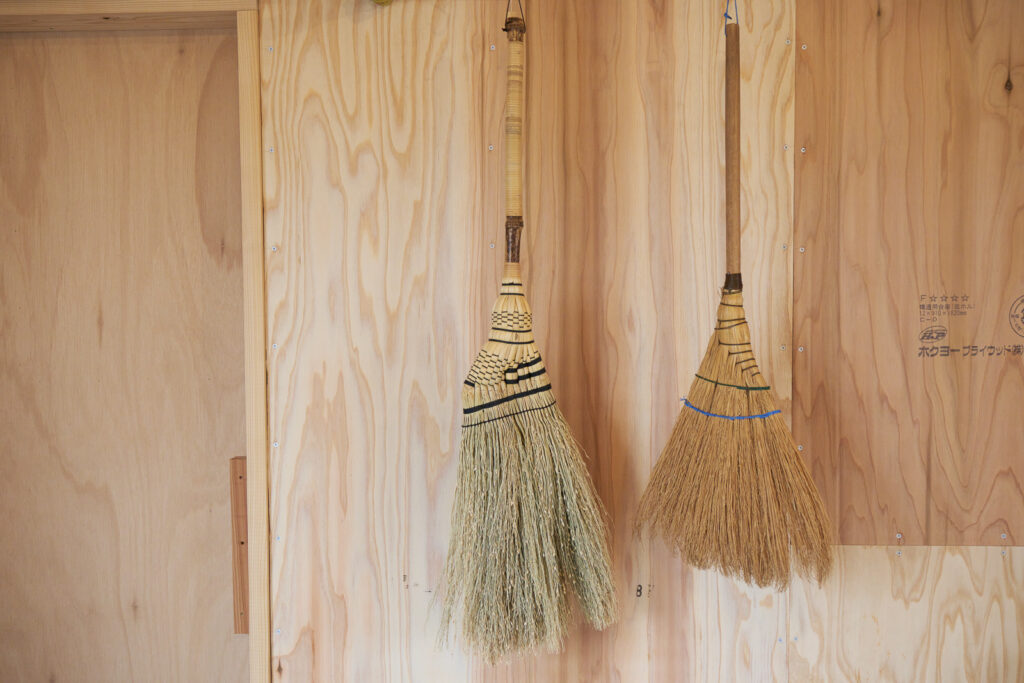
Kobayashi has always enjoyed crafts, taking up carpentry work and even building a wooden deck at his friend’s house. When he was 25 years old, he began visiting his grandfather to learn the craft of basket making. “After learning from him, I became very interested in this type of craftsmanship.”
His grandfather, who had been in and out of hospital, instructed him to make brooms using leftover materials. However, at that time, Kobayashi was only interested in making baskets.
A few years later, after his grandfather passed away, Kobayashi remembered that he wanted him to make brooms. Kobayashi began learning from a nearby elderly lady who used to make brooms together with his grandfather. He then began searching for a place to apprentice as a broom craftsman, leaving his job at a geotechnical survey company where he had worked for 10 years. He knocked on the door of a broom shop in Kanagawa.
There, he met his master, Jiro Yamada, who taught him traditional techniques and the basics of broom-making. It took him about three to four years of hands-on experience to fully understand the process of making a broom.
“At first I used to dislike the ‘fusekomi’ step (gathering the shoulder of the broom by striking it with a wooden hammer and tying it with thread). Also, I didn’t like the ‘ootoji’ step (tying the thickness and width of the broom with a thick string) that is done at the final stage. But slowly, I started to enjoy them.”
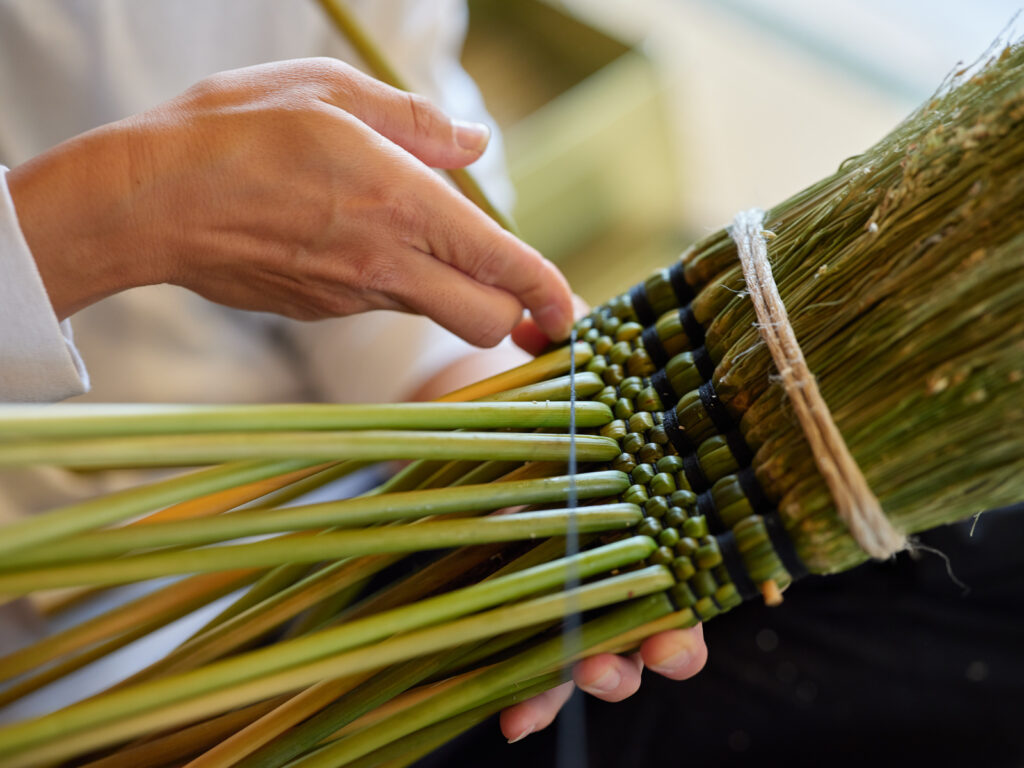
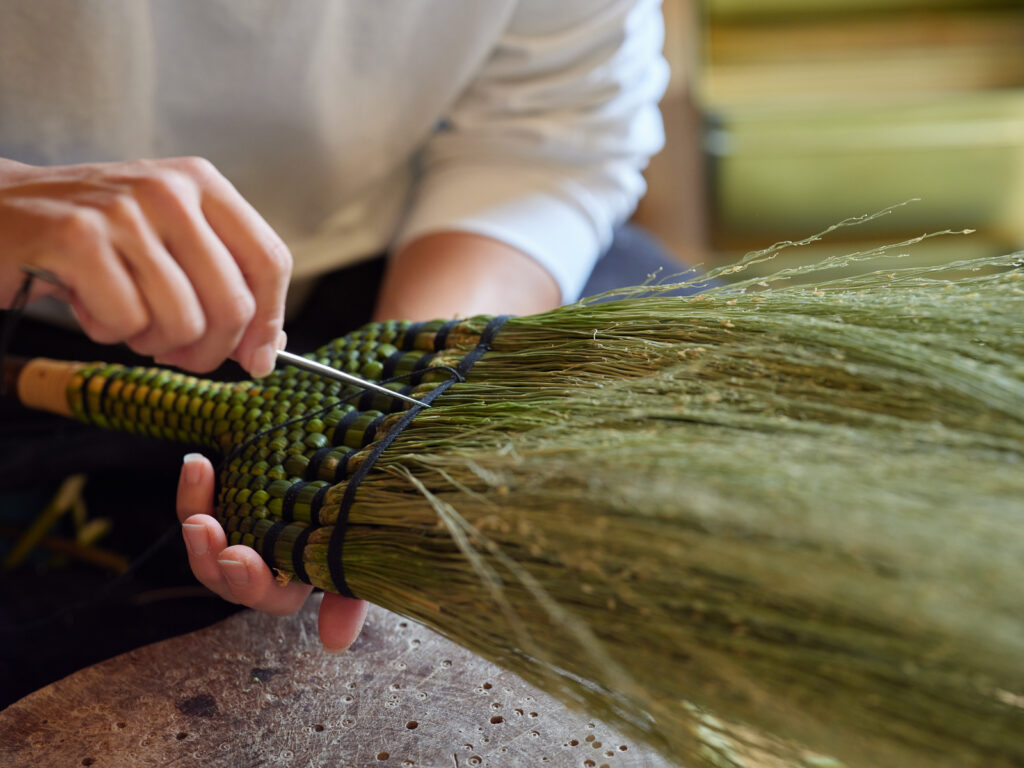
In May 2022, he became independent. He set up his workshop in Fukuroi City, where he was born and raised, and named it “hashime” after his grandfather.
On a raised platform in the workshop, only as wide as two bamboo mats (tatami), Kobayashi meticulously crafts the brooms one by one using wooden hammers and large needles. The day we interviewed him, he showed us the process of the craft, creating a traditional style long-handled broom called “Nagae Bouki Nanatsu Tama,” which is held with both hands and used to sweep the floor.
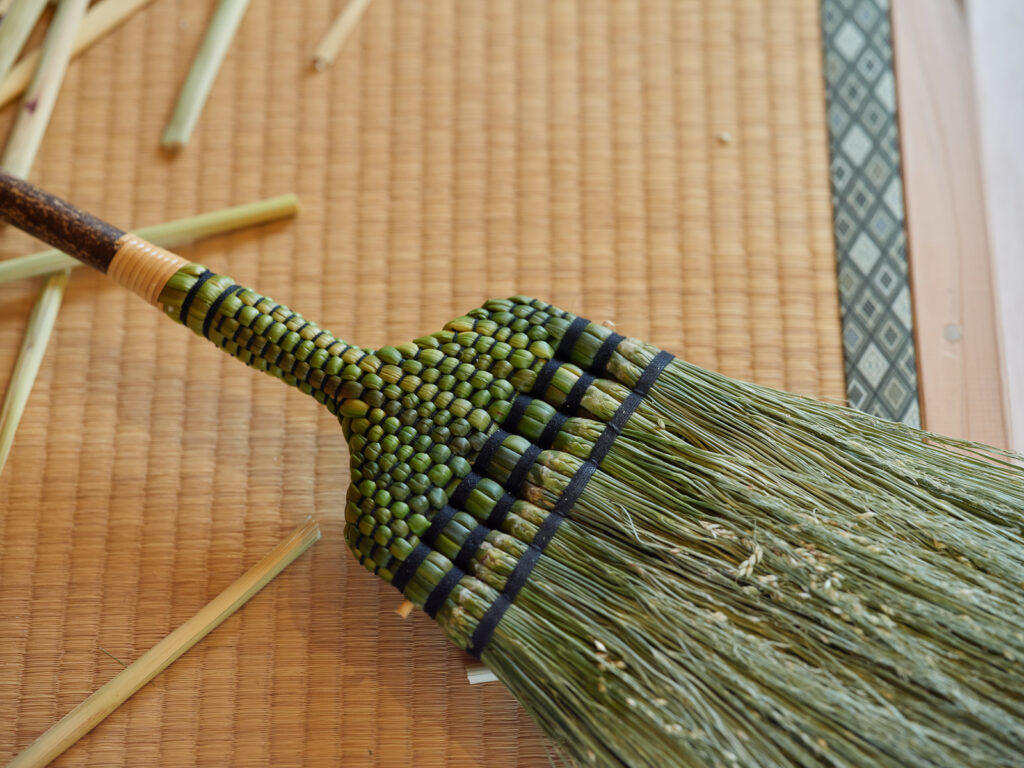
The material used is a type of broom corn in the Poaceae family called “Houki Morokoshi.” Kobayashi’s broom making process begins with sowing the seeds. “It’s a variety specifically used for making brooms and not for consumption. Those who make brooms domestically generally cultivate it themselves,” he explained.
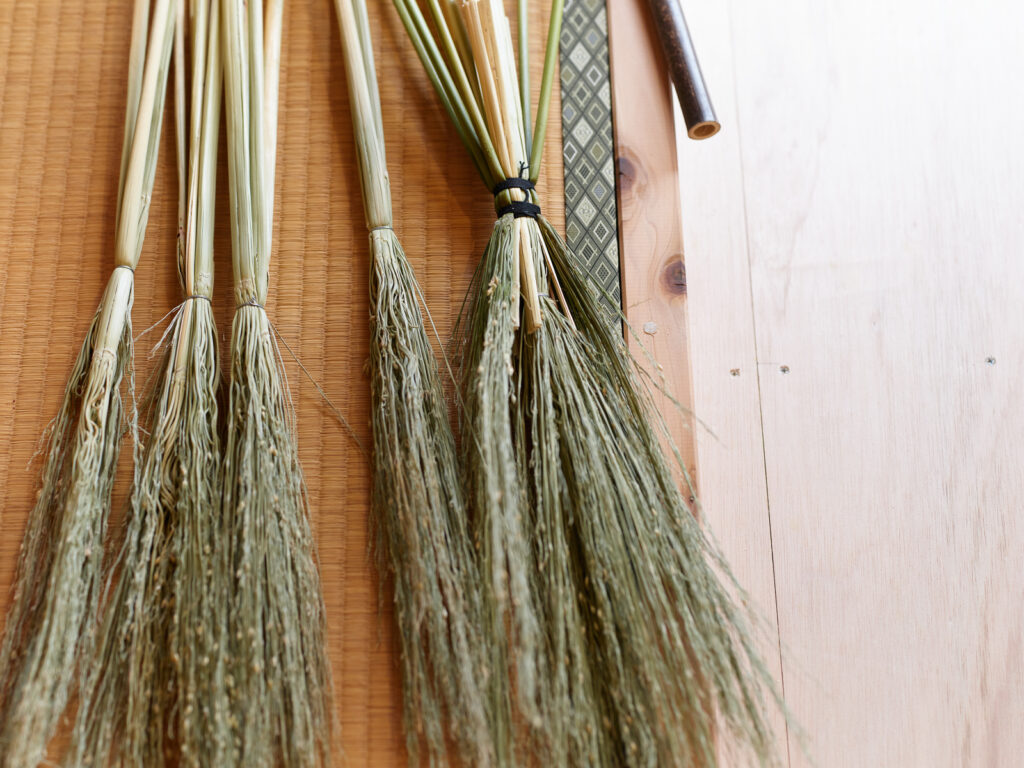
The cultivation period is similar to that of rice. “We sow the seeds around May, and after the rainy season ends, from around the end of July for about a month and a half, we gradually harvest them. They grow to about two to three meters in approximately two to three months. The panicles emerge from the tip and then we harvest them one by one, pulling them in from the upper part. We thresh them on the same day and let them air-dry for about three days.”
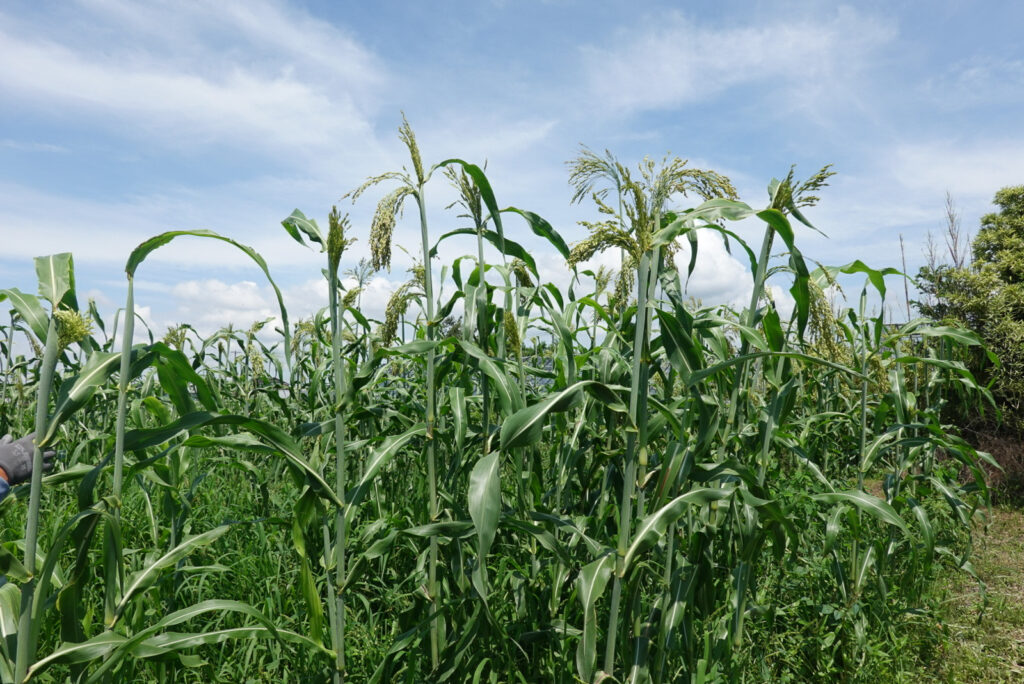
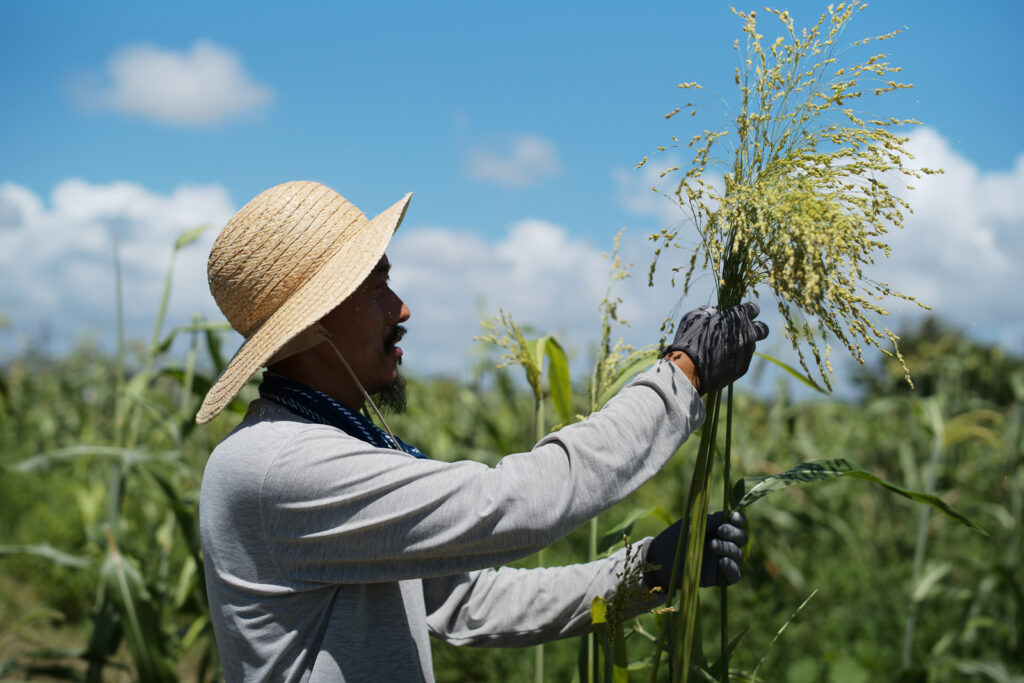
Kobayashi takes care of the field alone, and when harvest season comes, he focuses solely on harvesting, taking a pause from broom-making. The Houki Morokoshi used on that day was harvested last year.
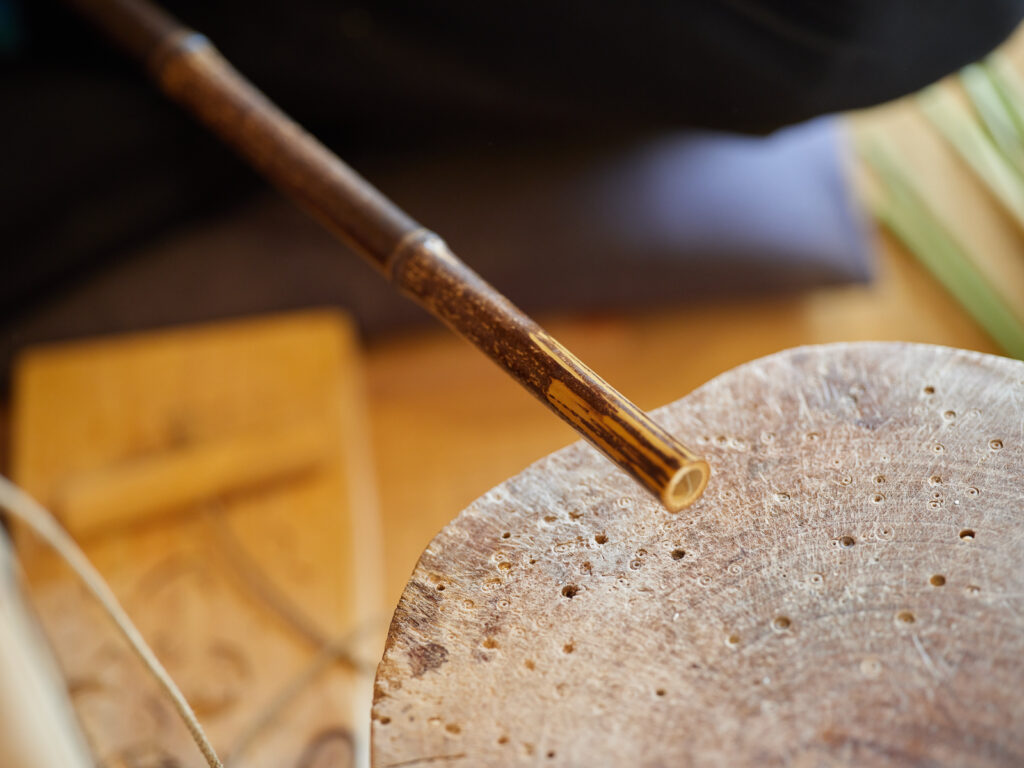
The material for the handle is bamboo. “This is black bamboo and tiger-striped bamboo. I use black bamboo when using black thread and white bamboo when using white thread. Recently, I have been able to obtain a thick and sturdy bamboo called “Hoteidake” that is also used for fishing rods, so I plan to use it from now on.”
To prevent the bamboo from splitting, Kobayashi wraps rattan around the handle. To wrap this he has come up with a technique called “Toui-tsugi”, a play on the traditional pottery repair called “Kintsugi.” “The idea started when I received permission from ‘Niwa-no-Aida’, a pottery shop in Hamamatsu, to do things freely. So, I began weaving rattan through holes in plates.”
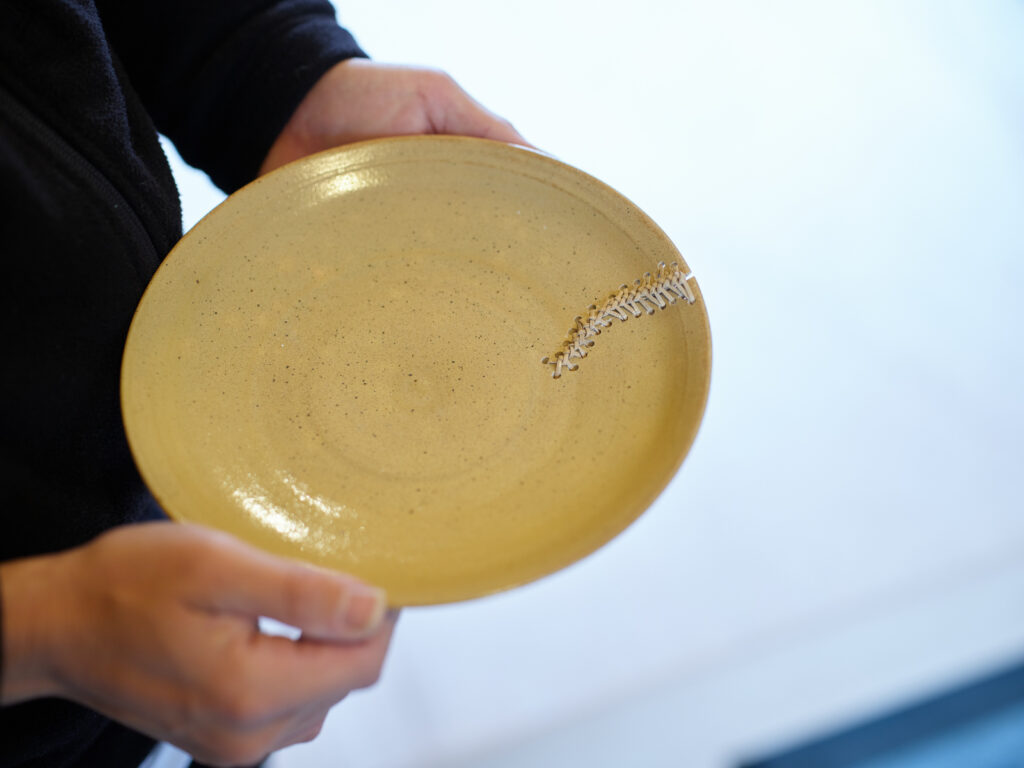
The basis for his creations stems from the traditional broom but also incorporates modifications. Kobayashi gets his inspiration and ideas from various sources.
“I think a lot myself, but I often receive requests from customers like ‘I want something like this’ or ‘Can you make it this size?’ So, I create brooms based on their requests.”
Working with natural materials and without specific numerical guidelines for tightness or adjustment, Kobayashi relies on his senses to balance and adjust the broom. “It also varies depending on the condition of the panicles that year. If I harvest a lot of thin panicles, I adjust by weaving more of them. I make adjustments like that while creating the brooms.”
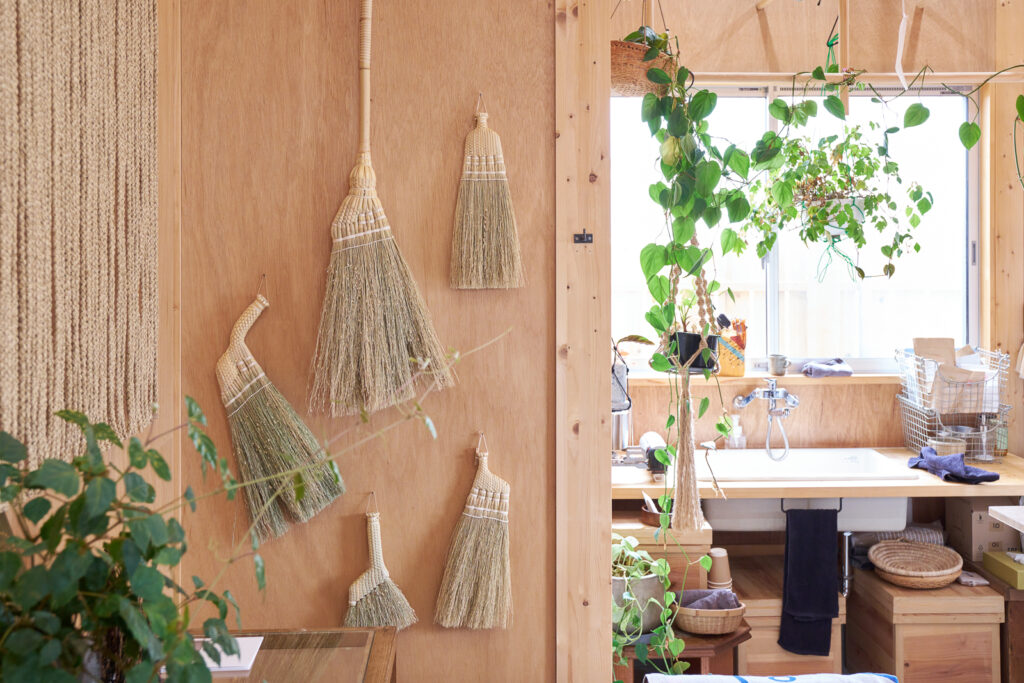
Kobayashi, a craftsman who describes broom-making as enjoyable, shares what he appreciates about brooms.
“They don’t make any noise, they don’t need electricity, and you can use them anywhere, so you don’t have to worry about the time to use them. If you leave them out, you can use them in various places. I also think it’s nice to use brooms as a complement to vacuum cleaners. It’s a traditional item, and I feel a sense of beauty in its form as well.”
Just by being displayed, hashime’s brooms are like works of art, but their true value is understood when they are actually used. For those who usually use a vacuum cleaner or for those that have never used a traditional Japanese broom, the experience can feel like a “rediscovery of the broom”.
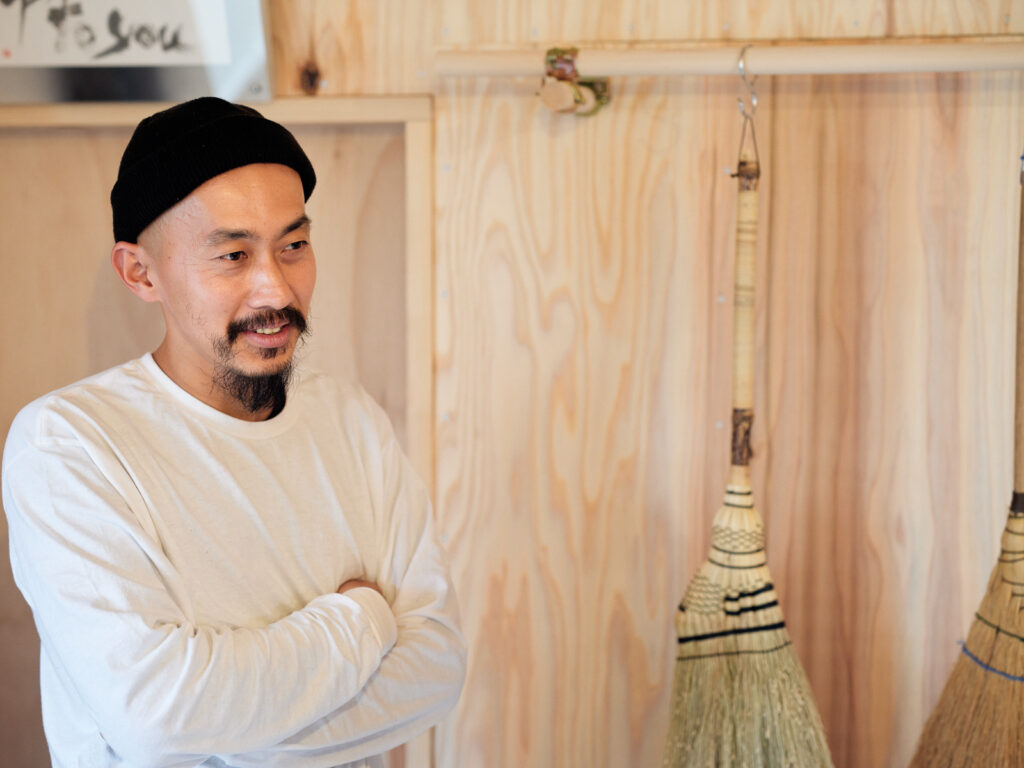
Kenya Kobayashi
Born in Fukuroi City, Shizuoka Prefecture. His desire to become a craftsman began at the age of 25, when his grandfather, a vine craftsman, taught him how to make baskets. In 2015 he began making brooms under the guidance of mentor, Jiro Yamada, a broom craftsman in Kanagawa. In 2022, he went independent, creating his brand “hashime”.











